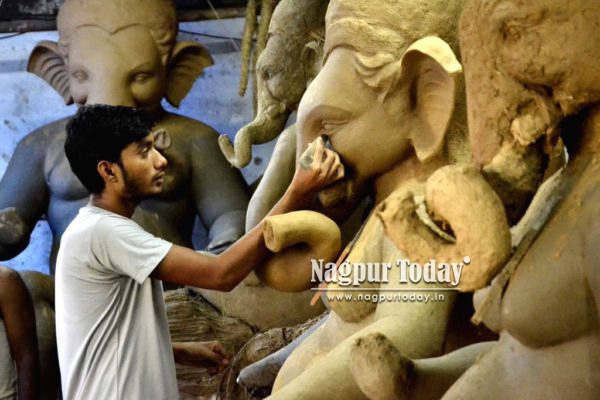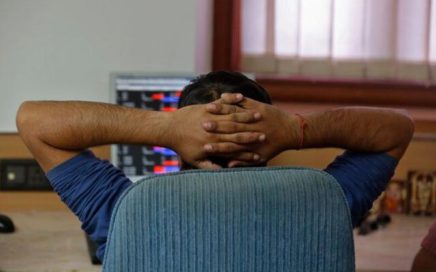
Nagpur: As Nagpur counts down to the 10-day Ganeshotsav beginning August 27, the soul of Nagpur quietly stirs to life in its age-old lanes. In Chitar Oli, the city’s iconic idol-making district, the air is thick with the scent of wet clay, the rhythmic knock of carving tools, and murmurs of “Ganpati Bappa Morya.”
This isn’t just preparation. It’s tradition, faith, and craftsmanship converging in a month-long ritual that transforms earth into divinity.
Despite battling rising input costs, over 500 idol makers across Chitar Oli, Lalganj, Kalamna, Kumbharpura, Budhwari Road, and Jagnade Square are deeply immersed in their labour of love. For many, this isn’t just a livelihood, it’s a legacy handed down through generations.
Streets that shape a God
Every bylane in Chitar Oli resembles an open-air workshop, Ganesh idols in various stages of creation line the pathways, ranging from humble 2-foot statues for households to majestic 12-foot figures destined for grand sarvajanik mandals.
“In July, we focus on medium-sized idols. The big ones need space, waterproof sheds, and careful drying,” says a second-generation sculptor working out of Chitar Oli. “We start early in the morning and sometimes work till midnight. This is more than just business, it’s our offering to Bappa.”
And it’s not just Nagpur that awaits these deities. Orders have started pouring in from Chhattisgarh, Madhya Pradesh, and parts of rural Maharashtra, with eco-conscious buyers increasingly opting for Shadu clay idols over Plaster of Paris (POP).
The clay vs. POP conundrum
While POP idols are quicker and cheaper to make, they’ve come under fire for their environmental harm. Despite this, demand continues, forcing clay idol makers to compete at a disadvantage.
“A clay idol takes up to 10 days. A POP one? Just two,” says an artisan from Kumbharpura. “But clay is biodegradable. It merges with the water without polluting it. The environment is as sacred to us as Bappa himself.”
Still, challenges mount. The cost of clay, bamboo, paints, and labour has surged. With margins thinning, artisans are walking a tightrope, unable to raise prices substantially, lest they lose customers.
Come monsoon, tarpaulin-covered tents and make-do sheds take over. Work continues late into the night under dim tube lights and buzzing fans. It’s a seasonal struggle, but one embraced with quiet determination.
In workshops across Kalamna and Lalganj, idol-makers are already bracing for the next wave — the rush of mid-July, when last-minute orders peak and every helping hand counts. “We sleep less, eat late, and get drenched. But we never stop,” says one of the few women idol-makers in the area. “This is devotion in motion.”
For Nagpur’s idol makers, Ganeshotsav is not merely a celebration, it’s a canvas for tradition, a test of endurance, and a spiritual offering in sculpted form. With every crafted modak, sculpted mouse, or tilted crown, Lord Ganesh isn’t just moulded, He is reborn, year after year, in the heartbeat of this city.
As the festival nears, the message is clear: The hands that shape Ganesh also shape the city’s soul.















